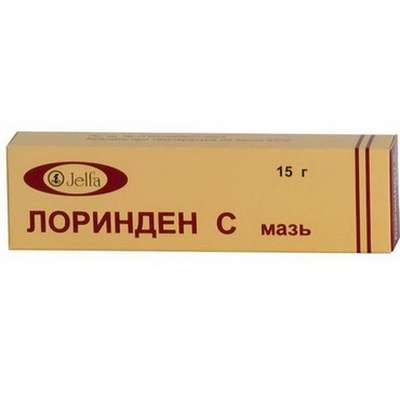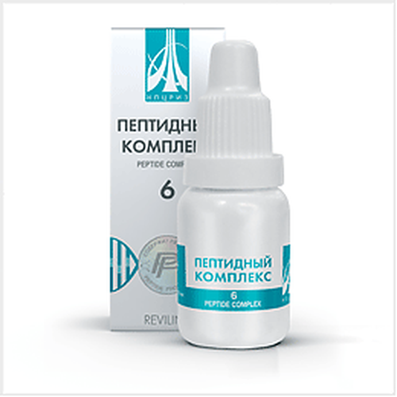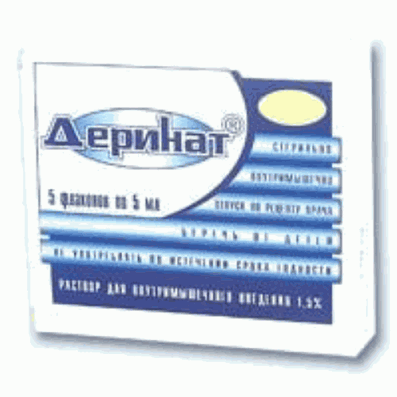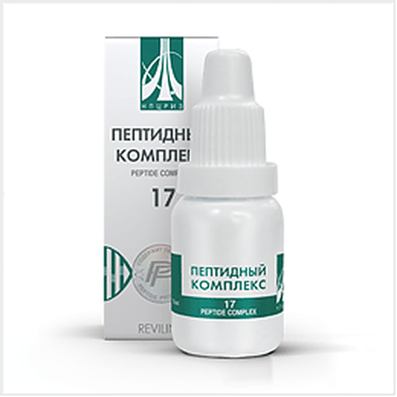Instruction for use: Eprosartan
I want this, give me price
The trade name of Eprosartan: Naviten, Teveten, Eprosartan sodium
Latin name of substance Eprosartan
Eprosartanum (genus. Eprosartani)
Chemical name
(E) -alpha- [[2-Butyl-1 - [(4-carboxyphenyl) methyl] -1H-imidazol-5-yl] methylene] -2-thiophenepropanoic acid
Gross formula
C23H24N2O4S
Pharmacological group of substance Eprosartan
Angiotensin II receptor antagonists (AT1 subtype)
The nosological classification (ICD-10)
I10 Essential (primary) hypertension: hypertension; Arterial hypertension; Arterial hypertension crisis course; Essential Hypertension; Essential hypertension; Essential hypertension; Essential hypertension; Essential hypertension; Primary hypertension; Arterial hypertension, complications of diabetes; The sudden increase in blood pressure; Hypertensive disorders of blood circulation; hypertensive condition; hypertensive crises; arterial Hypertension; malignant Hypertension; Hypertonic disease; hypertensive crises; accelerated hypertension; malignant hypertension; The aggravation of hypertensive disease; Transient hypertension; Isolated systolic hypertension
I15 Secondary hypertension: Arterial hypertension, complications of diabetes; hypertension; The sudden increase in blood pressure; Hypertensive disorders of blood circulation; hypertensive condition; hypertensive crises; hypertension; arterial Hypertension; malignant Hypertension; hypertensive crises; accelerated hypertension; malignant hypertension; The aggravation of hypertensive disease; Transient hypertension; hypertension; Arterial hypertension; Arterial hypertension crisis course; renovascular hypertension; Hypertension symptomatic; Renal hypertension; Renovascular hypertension; renovascular hypertension; Symptomatic hypertension
CAS code
133040-01-4
Characteristics of the substance Eprosartan
APA II.
White or almost white loose crystalline powder. Insoluble in water, soluble in ethanol.
Pharmacology
Pharmacological action - hypotensive, blocking AT1-receptors of angiotensin II.
Pharmacodynamics
It acts selectively on angiotensin receptors located in the vessels, heart, kidneys and adrenal cortex, forming a strong bond with them, followed by a slow dissociation. Angiotensin II binds to AT1 receptors in many tissues (for example, smooth vascular musculature, adrenal glands, kidneys, heart) and causes vasoconstriction, sodium ion retention and aldosterone release, target organ damage-myocardial hypertrophy and vessels.
Eprosartan prevents the development or weakening of the effects of angiotensin II, inhibits the activity of RAAS. Has vasodilating, antihypertensive and mediocre - diuretic effect
Reduces arterial vasoconstriction, OPSS, pressure in a small circle of blood circulation, reabsorption of fluid and sodium ions in the proximal segment of the renal tubules, and secretion of aldosterone. With prolonged use suppresses the proliferative effect of angiotensin II on smooth muscle cells of blood vessels and myocardium.
Antihypertensive effect after taking a single dose persists for 24 hours, persistent therapeutic effect is manifested with regular admission in 2-3 weeks without changing the heart rate.
Does not cause the development of orthostatic hypotension in response to taking the first dose.
In patients with arterial hypertension, eprosartan does not affect the concentration of triglycerides, total cholesterol or LDL cholesterol in the blood, determined on an empty stomach. In addition, eprosartan does not affect the concentration of glucose in the blood on an empty stomach.
Increases renal blood flow and GFR, reduces excretion of albumins (nephroprotective effect) while maintaining renal self-regulation, regardless of the degree of renal insufficiency.
Does not affect the purine metabolism, does not have a significant effect on the excretion of uric acid by the kidneys.
Rarely, than ACE inhibitors, causes the appearance of effects associated with bradykinin (including dry persistent cough).
The incidence of dry persistent cough in patients receiving eprosartan is 1.5%. When replacing patients with a cough of an ACE inhibitor with eprosartan, the frequency of dry persistent cough is consistent with placebo.
Termination of eprosartan treatment is not accompanied by withdrawal syndrome.
During clinical trials, the use of eprosartan in a daily dose of up to 1200 mg for 8 weeks was effective without an apparent relationship between dose and the incidence of reported adverse events.
Eprosartan does not inhibit the isoenzymes of CYP1A, 2A6, 2C9 / 8, 2C19, 2D6, 2E and 3A in the cytochrome P450 system in vitro.
Pharmacokinetics
After ingestion of a single dose of 300 mg bioavailability is approximately 13%. The association with blood plasma proteins is high (98%) and remains constant after reaching a therapeutic concentration in the blood plasma. The degree of binding to blood plasma proteins does not depend on sex, age, liver function and does not change with a slight or moderate degree of renal failure, but it may decrease with severe renal failure. Cmax is determined 1-2 hours after ingestion.
Eating reduces absorption by 25% (clinically insignificant), as well as Cmax and AUC. Vd - 13 liters, total clearance - 130 ml / min.
T1 / 2 - 5-9 hours.
Output is mostly unchanged - through the intestine 90%, kidneys - 7%. An insignificant part (less than 2%) is excreted by the kidneys in the form of glucuronides; 20% concentration in the urine is acylglucuronide eprosartan, 80% - unchanged eprosartan. Practically does not cumulate. Body weight, sexual and racial affiliation do not affect the pharmacokinetics of eprosartan. Patients under the age of 18 years have not been studied pharmacokinetics.
In the elderly, the values of Cmax and AUC increase on average by a factor of 2, which, however, does not require correction of the dosing regimen.
In liver failure, AUC (but not Cmax) increases by an average of 40%, which does not require correction of the dosing regimen.
Patients with a moderate degree of CRF (Cl creatinine from 30 to 59 ml / min) AUC and Cmax - by 30%, and with a high degree of CRF (Cl creatinine from 5 to 29 ml / min) treated with eprosartan - by 50% With healthy volunteers.
Clinical researches
Two large, randomized controlled trials were conducted: ONTARGET (a study continuing until the end result, to study the effects of telmisartan alone and in conjunction with ramipril) and VA NEPHRON-D (a study of diabetic nephropathy) in which the combined use of an ACE inhibitor and APA II .
The ONTARGET study was conducted in patients with a history of cardiovascular or cerebrovascular disease or type 2 diabetes mellitus with signs of damage to target organs.
The VA NEPHRON-D study was performed in patients with type 2 diabetes and diabetic nephropathy.
These studies showed no significant beneficial effects on renal and / or cardiovascular (cardiovascular) function and mortality, while at the same time there was an increased risk of hyperkalemia, acute renal damage, and / or arterial hypotension compared with monotherapy. Taking into account similar pharmacodynamic characteristics, these results are also relevant for other ACE inhibitors and APA II.
ACE inhibitors and ARA II should not be used simultaneously in patients with diabetic nephropathy.
In addition, ALTITUDE (a study of the action of aliskiren in patients with type 2 diabetes mellitus, where changes in the function of CCC and kidneys were taken as endpoints) was conducted, which tested the benefits of adding aliskiren to standard therapy (an ACE inhibitor or ARA II) in patients With type 2 diabetes mellitus and chronic kidney disease, cardiovascular diseases or diseases of both types. The study was prematurely terminated because of the increased risk of adverse outcomes. The lethal outcome of cardiovascular disease and stroke were much more frequent in the treatment group with the addition of aliskiren than in the placebo group, in addition, undesirable events and serious adverse events (hyperkalaemia, arterial hypotension and renal dysfunction) were more common in the aliskiren group than in the aliskiren group Placebo group.
In the MOSES study (morbidity and mortality after stroke, comparison of eprosartan and nitrendipine for secondary prophylaxis), 1405 patients with arterial hypertension who had a history of cerebrovascular disorders received eprosartan or nitrendipine. In an open blind observational randomized prospective study in the eprosartan group, 78% of patients received 600 mg once daily; 12% - up to 800 mg / day; In the nitrendipine group, 47% received 10 mg / day and 42% - 20 mg / day (11% reached a dose of 40 mg). The primary combined endpoint included mortality from all causes, cerebrovascular disorders (transient cerebral circulation, long-term reversible ischemic neurological deficit, stroke) and CAS disorders (unstable angina, myocardial infarction, heart failure, pulmonary embolism and lethal arrhythmia), Including relapse of diseases. Target BP values were achieved in both groups and were maintained throughout the study. In the eprosartan group, the best results for the primary endpoint were observed (risk reduction by 21%). In the initial analysis of the data, the numerical risk index decreased by 12% for cerebrovascular and 30% for cardiovascular indications. These results were mainly due to a decrease in the number of cases of transient cerebral circulation / long-term reversible ischemic neurologic deficits, unstable angina and heart failure. Overall mortality was lower in the nitrendipine group (52 of 671 patients in the nitrendipine group compared with 57 of 681 patients in the eprosartan group (risk ratio 1.07, 95% CI 0.73-1.56, p = 0.725). Non-lethal myocardial infarction developed in 18 of 20, and stroke in 36 of 42 patients, which indicated numerically in favor of eprosartan.The primary endpoint of eprosartan was more pronounced in patients who did not receive beta-blockers.
Application of the substance Eprosartan
arterial hypertension.
Contraindications
Hypersensitivity to eprosartan; Pregnancy and the period of breastfeeding; Age under 18 years (effectiveness and safety not established); Hemodynamically significant bilateral stenosis of the renal arteries or severe stenosis of the artery of a single functioning kidney; Simultaneous use with aliskiren and aliskiren-containing drugs in patients with diabetes mellitus or moderate or severe renal dysfunction (GFR <60 mL / min / 1.73 m2).
Restrictions
Severe heart failure (IV functional class according to the NYHA classification); Bilateral stenosis of the renal arteries or stenosis of the artery of a single kidney; Decrease in BCC and / or excessive elimination of sodium from the body (including as a result of vomiting, diarrhea, high doses of diuretics); Stenosis of the aortic and mitral valve; Hypertrophic obstructive cardiomyopathy; IHD (limited experience); Hepatic insufficiency (experience of use is limited); Use in patients on hemodialysis or with Cl creatinine <30 mL / min; Use of Negroid races in patients (see "Precautions").
There are no data on the safety of eprosartan in patients with recent kidney transplantation.
Application of pregnancy and breastfeeding
The action category for fetus by FDA is D.
Eprosartan is contraindicated for use during pregnancy. Patients planning a pregnancy should switch to alternative antihypertensive drugs with established safety characteristics for use in pregnancy, unless continuation of ARA II therapy is necessary. Eprosartan therapy should be discontinued immediately after pregnancy is established and, if necessary, alternative therapy with a proven safety profile during pregnancy should be initiated.
The results of epidemiological studies on the risk of developing teratogenic effects when using ACE inhibitors during the first trimester of pregnancy do not allow for unambiguous conclusions, but a slight increase in risk cannot be excluded. While data from controlled epidemiological studies regarding the risk of using ARA II are not available, such a risk may exist for this class of drugs.
It is known that the therapy of ARA II in the II and III trimesters of pregnancy is toxic to the fetus (impairment of kidney function, low blood pressure, ossification of the skull bones) and newborn (renal failure, arterial hypotension, hyperkalemia). If still APA II was used during the second trimester of pregnancy, it is recommended to carry out ultrasound of the kidneys and bones of the fetal skull. Newborns, whose mothers took ARA II, should be carefully monitored for arterial hypotension.
Due to the lack of data on the use of eprosartan during breastfeeding, it should be replaced by other antihypertensive drugs with an established safety profile, especially when feeding a newborn or premature baby.
Data on the isolation of eprosartan in breast milk are not available, and if necessary, breastfeeding should be discontinued during lactation.
Side effects of the substance Eprosartan
Most often, patients receiving eprosartan reported adverse reactions such as headache and nonspecific complaints from the digestive system that occurred in approximately 11% and 8% of patients, respectively.
The incidence of adverse reactions described below was determined as very often (≥1 / 10); Often (≥1 / 100, <1/10); Infrequently (≥1 / 1000, <1/100); Rarely (≥1 / 10000, <1/1000); Very rarely (<1/10000).
From the immune system: infrequently - hypersensitivity reactions1.
From the side of the central nervous system: very often - headache1; Often - dizziness, 1 asthenia.
From the CVS: infrequent - a pronounced decrease in blood pressure.
From the respiratory system, chest and mediastinum: often - rhinitis.
From the skin and subcutaneous fat: often - allergic skin reactions (eg skin rash, itching); Infrequently - angioedema (including face, lips, tongue, pharynx) 1.
From the digestive system: often - nonspecific complaints from the gastrointestinal tract (eg nausea, diarrhea, vomiting).
1 The incidence was no more than in the placebo group.
In addition to spontaneous reports reported in clinical studies, spontaneous reports of the following side effects during the post-marketing application of eprosartan were obtained (the frequency cannot be determined from the available data - the frequency is unknown).
On the part of the genitourinary system: a violation of kidney function, incl. Renal failure in patients at risk (eg with renal artery stenosis).
Interaction
Since in placebo-controlled clinical studies there was an increase in potassium in the blood serum and also based on experience with other drugs that affect RAAS, the simultaneous use of potassium-sparing diuretics, food supplements containing potassium, substitutes for edible salt containing potassium, and others Drugs that can increase the potassium content in the blood (eg heparin), can cause an increase in potassium in the serum.
Clinical trial data showed that the double blockade of RAAS by the combined use of ACE inhibitors, APA II or aliskiren is associated with an increased incidence of adverse events such as hypotension, hyperkalemia, and decreased kidney function (including acute renal failure) compared with the use of a separate agent acting On the RAAS (see "Precautions", "Contraindications").
The antihypertensive effect of eprosartan can be potentiated by other antihypertensive agents.
There are cases of reversible increase in the lithium content in the blood serum and the development of toxic reactions with simultaneous administration of lithium preparations with ACE inhibitors. We cannot exclude the possibility of developing such an effect after taking eprosartan, in this regard, it is recommended to monitor the lithium content in blood plasma with simultaneous administration with eprosartan.
As with the use of ACE inhibitors, the combined use of APA II and NSAIDs may lead to an increased risk of impaired renal function, including the possibility of developing acute renal failure, and an increase in potassium in the blood serum, especially in patients with an existing renal impairment. Such combinations should be used with caution, especially in elderly patients. Patients are advised to perform volume replacement therapy and monitor renal function after initiating co-therapy and periodically during treatment.
The combined use of losartan and NSAID indomethacin led to a decrease in the efficacy of ARA II, such an effect cannot be ruled out in the joint use of other drugs of these classes.
Overdose
Data on overdose in humans are limited. In the course of postmarketing studies, there were individual reports of doses of eprosartan up to 12,000 mg. Most patients did not experience any symptoms. One patient, after taking 12,000 mg of eprosartan, experienced a vascular collapse. The patient completely recovered. The most likely manifestation of an overdose will be a pronounced decrease in blood pressure. If symptomatic arterial hypotension occurs, supportive therapy should be provided.
Routes of administration
Inside.
Precautions for the substance Eprosartan
Patients with a risk of impaired renal function
In some patients whose renal function depends on the activity of RAAS (eg, patients with severe NYHA class IV CHF functional class, bilateral renal artery stenosis or renal artery stenosis of a single kidney), oliguria and / or progressive azotemia may develop during treatment with ACE inhibitors and In rare cases - acute renal failure. These phenomena are most likely in patients taking diuretics simultaneously. Due to the lack of experience in the use of ARA II in patients from the above-mentioned risk group, renal function impairment can not be ruled out by the use of eprosartan due to suppression of RAAS.
Before prescribing eprosartan, patients with renal insufficiency and periodically during the course of therapy should monitor kidney function. If there is a worsening of kidney function during this period, the expediency of continuing treatment with eprosartan should be reconsidered.
Hyperkalemia
When combined with other drugs that affect RAAS, hyperkalemia can occur, especially if there is kidney failure and / or heart failure. It is recommended to monitor the potassium content in blood serum in patients at risk.
Based on the experience of using other drugs that affect RAAS, the combined use of potassium-sparing diuretics, dietary supplements containing potassium, substitutes for edible salt containing potassium, and other agents that can increase the serum potassium content (eg heparin) can cause an increase in the potassium content In the blood serum. Joint therapy should be conducted with caution.
Double blockade of RAAS
There is evidence that simultaneous use of ACE inhibitors, ARA II or aliskiren increases the risk of hypotension, hyperkalemia and renal dysfunction (including acute renal failure). Double blockade of RAAS by combined use of ACE inhibitors, APA II or aliskiren is not recommended.
If a double blockade is extremely necessary, it should be performed strictly under the supervision of a specialist and with constant monitoring of kidney function, electrolyte content and blood pressure.
ACE inhibitors and ARA II should not be used simultaneously in patients with diabetic nephropathy.
Primary hyperaldosteronism
Patients with primary hyperaldosteronism treatment with eprosartan is not recommended.
Stenosis of the aortic and mitral valve, hypertrophic obstructive cardiomyopathy
As with the use of other vasodilators, the appointment of eprosartan to patients with stenosis of the aortic and mitral valve or hypertrophic obstructive cardiomyopathy should be done with caution.
Kidney Transplantation
There is no experience with eprosartan in patients with recent kidney transplantation.
Other special instructions and precautions
Like ACE inhibitors, eprosartan and other APA II less effectively reduce blood pressure in patients of the Negroid race compared to other races, possibly because of the higher prevalence of conditions characterized by low renin activity.
Symptomatic arterial hypotension
In patients with reduced BCC and / or salt content (as a result of diuretic therapy), with limited consumption of edible salt, prolonged and repeated vomiting, the use of eprosartan may cause the development of symptomatic arterial hypotension. Before beginning treatment, it is necessary to correct the BCC and / or salt content.
Effect of eprosartan on the ability to drive vehicles and work with mechanisms. It has not been studied, but on the basis of pharmacodynamic properties, it can be said that it does not exert such influence. During the treatment with eprosartan, care must be taken when driving vehicles and engaging in potentially dangerous activities that require a high concentration of attention and speed of psychomotor reactions, due to the possibility of dizziness and weakness.

 Cart
Cart





